► Hybrid supercar driven
► Tweaked suspension and new shoes
► Read our verdict below
The launch of the second-generation Honda NSX back in 2015 certainly raised plenty of eyebrows. Gone were the high-revving naturally aspirated V6, manual gearbox and rear-wheel drive, and in came twin turbochargers, four driven wheels and a hybrid powertrain. To further pour salt in the wound, it wasn’t even designed and developed in Japan, instead being created by Honda’s American arm.
No matter, though, as early reviews showed plenty of promise. We marvelled at the way its everyday usability was brilliantly juxtaposed with devasting off-the-line pace and styling straight out of an alien fighter jet catalogue. Different to the original, yes, but a worthy successor nonetheless. And yet there was one aspect about the way it drove that elicited a small but notable pang of disappointment. Involvement.
The engineering excellence was clearly there for all to see, but it felt like, at times, you were being kept at arm’s length from it. A futuristic Martian rocket ship that wasn’t entirely trusting of its human operator. Honda engineers, though, are nothing if not perfectionists so, for 2019 until its demise (more about that later), the NSX was rebooted with a number of small, yet collectively significant, changes.
What changed?
You mean apart from the anti-shrinking-violet Thermal Orange Pearlescent paint? Well, perhaps taking early reviews to heart, Honda sought to maintain the NSX’s usability while simultaneously sharpening up the driving dynamics.
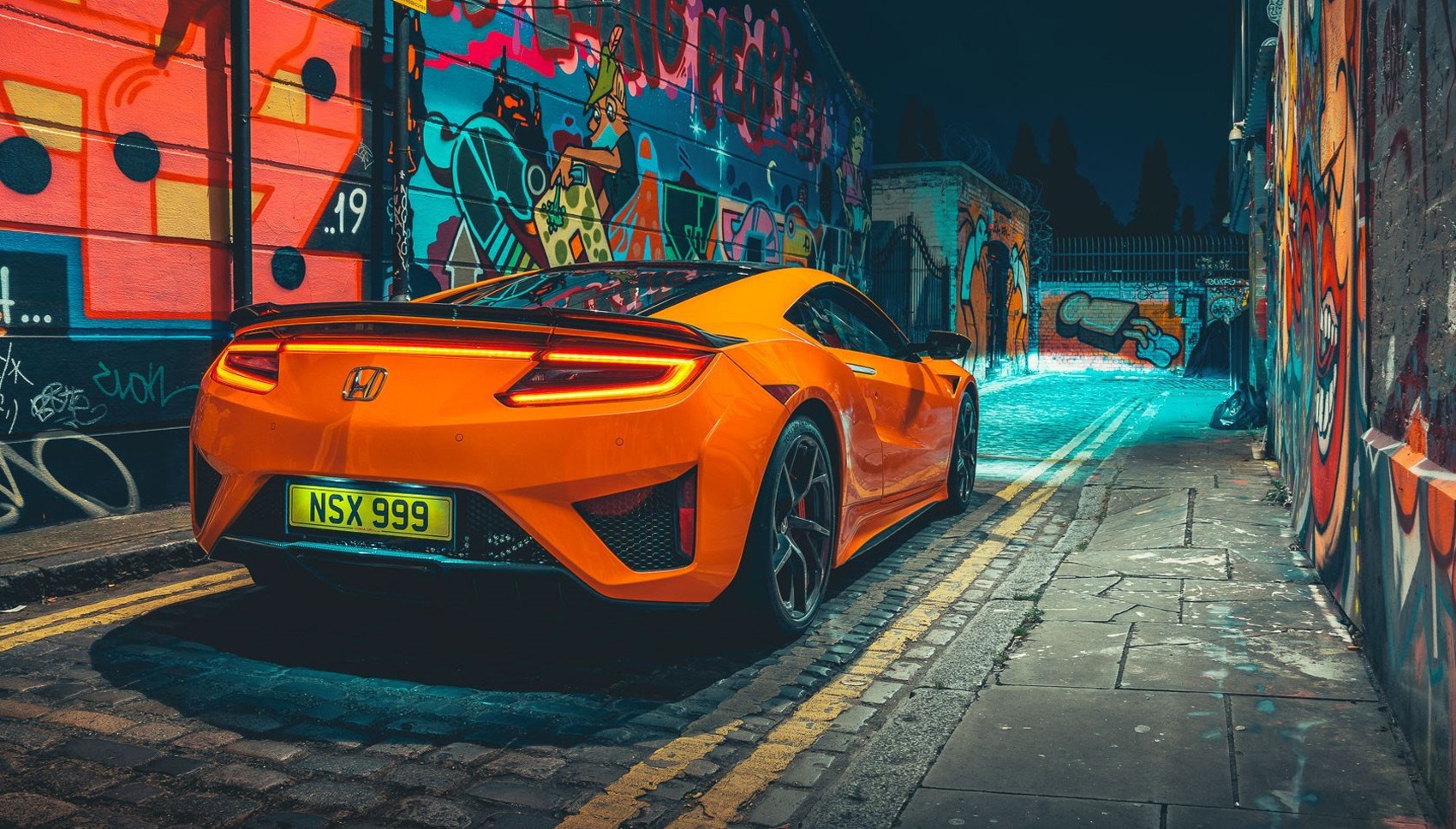
So, in came recalibrated power steering and tweaked magnetorheological dampers, upgraded anti-roll bars (stiffened 26% at the front and 19% at the rear), firmer toe link bushings and new Continental SportContact 6 tyres developed specifically for the NSX.
No – and it really doesn’t need it. Little has been done to the twin-turbo 3.5-litre V6 hybrid unit, with only a software remap changing the way the electric assistance works with the engine. So you’ve still got a combined output of 573bhp and 476lb ft of torque transferred to the road via the SH-AWD system and nine-speed dual-clutch automatic gearbox.
Granted, 573bhp doesn’t sound that much in a supercar that weighs in around 1.8 tonnes, but try telling that to whoever’s in the passenger seat when you first put your foot down. With launch control activated, I’ve never experienced such a clean and mind-blowingly fast getaway on imperfect (and not entirely dry) tarmac before.
The initial acceleration off the line is down to the electric motors, with the engine only kicking in after the first 0.15 seconds and 0.1g has been detected. In other words, it’s a dream combination of electricity and petrol working together to deliver staggering performance. And sure, it does begin to tail off against punchier supercars, but don’t believe anyone who says (as some on the internet have) that the NSX isn’t quick enough.
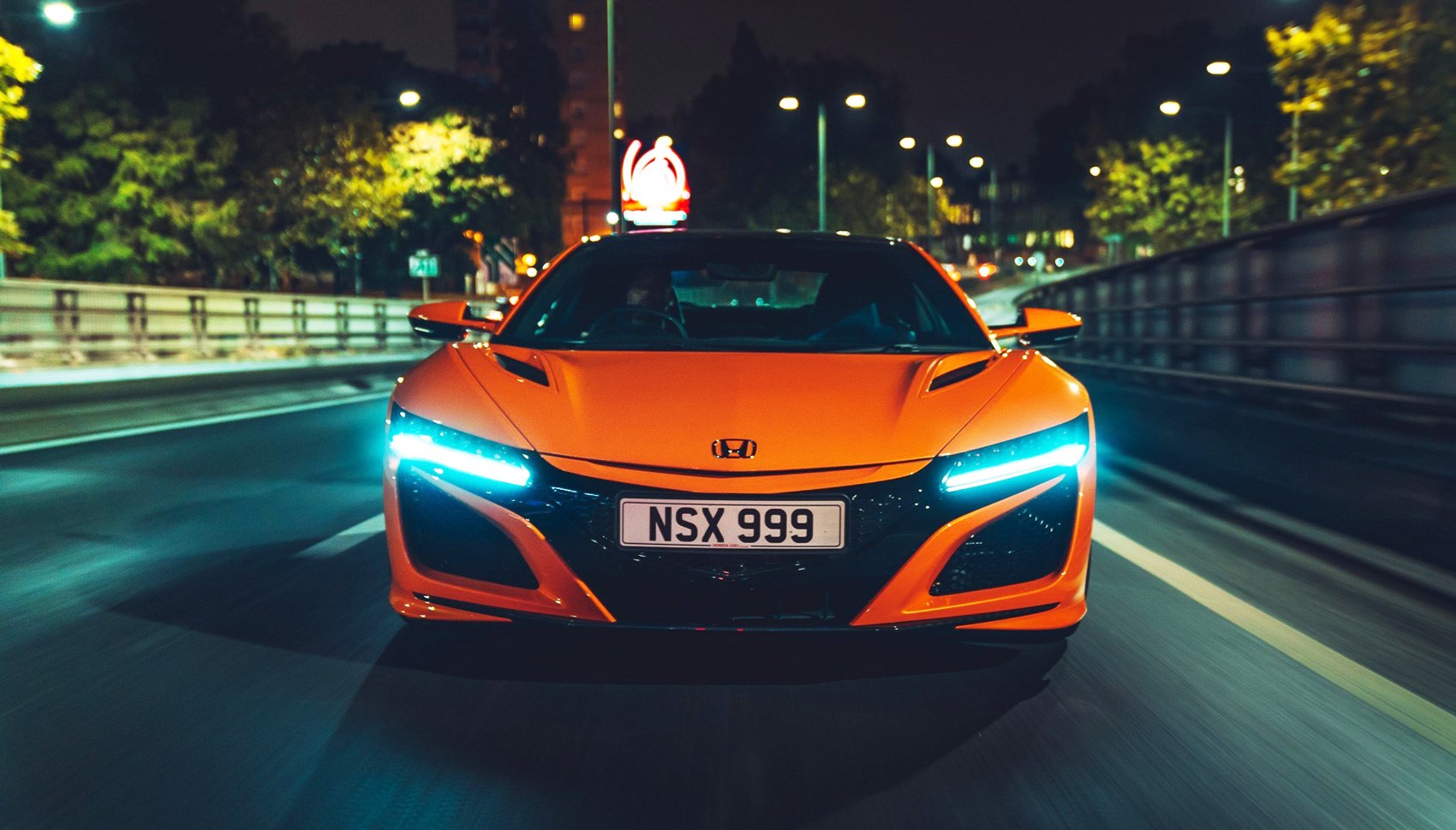
Special mention goes to the gearbox, too. While the paddles may make exaggerated ‘clacking’ sounds every time you switch gears, the changes both up and down the ‘box are sublime. Aided by a compact electric motor as a gear actuator (instead of a conventional pneumatic or hydraulically operated system), there’s barely any loss of momentum during changes. Turbo lag, too, is virtually non-existent, with each of the three electric motors (one direct drive attached directly to the crankshaft and two supplying power to the front wheels) delivering instant boost while the engine gets into its stride.
The artificially enhanced engine noise (most noticeable in Track mode) still feels a bit of a let-down, but the NSX is far from the only car to use such trickery. And there’s no denying that the turbo whoosh both on and coming off the throttle is more than a little addictive.
And it’s still easy to drive every day?
Absolutely. Although the Audi R8 surely trumps it for being the most usable all-wheel-drive supercar, the NSX still boasts a comfortable ride, excellent refinement and even decent fuel consumption if you’re careful.
It’s not perfect, mind. The interior feels like a parts-bin special with bits from your average Acura dotted everywhere, the infotainment system makes a Cold War Soviet submarine look intuitive, the headlight range is poor and the boot is bijou at best.
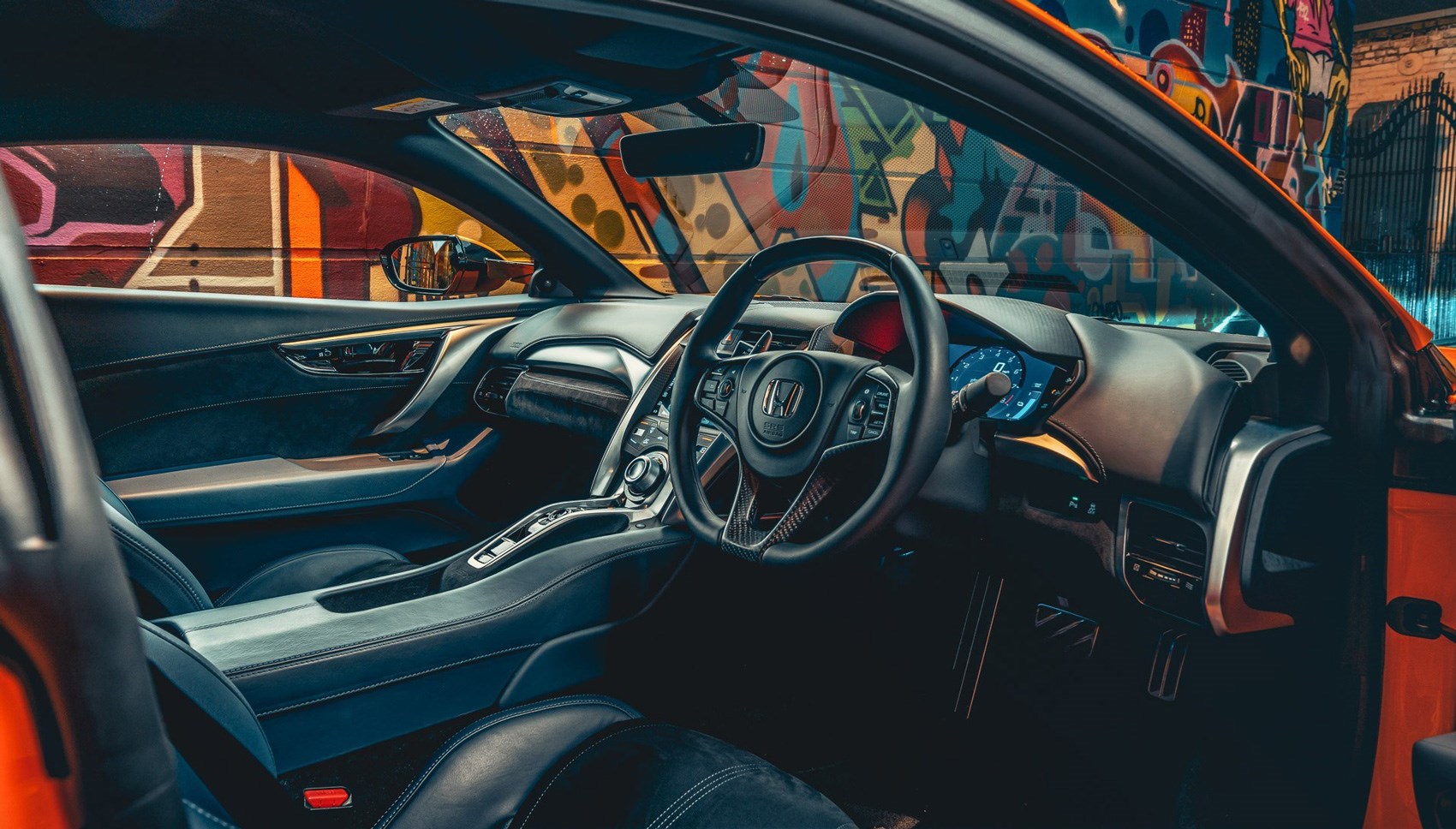
However, the NSX’s party piece remains the ability to drive around at low speeds on electric power alone. Although not a plug-in hybrid with a dedicated electric range, the NSX is just about driveable around city environments without the engine kicking in – a surreal feeling in a near-600bhp bright orange supercar.
Has the handling improved?
Honestly, you’ll only notice the difference if you’ve spent a fair bit of time in the pre-facelift car, but yes, it has improved. Granted, the NSX hasn’t taken on the dynamic goodness of a McLaren 570S with mere chassis tweaks, but there is now a layer of engagement that seemingly wasn’t there previously.
You can still travel at ludicrous speeds, yet there are more natural responses mid corner, for example. Go in too hot and you can pull the nose in by bleeding off the power, while healthy dollops of throttle bring the tail into play, although only if you’re decisive. Hesitate and it feels as though the electric motors driving the front wheels beat the engine and rear wheels to delivering the power, tipping the balance of the car forwards.
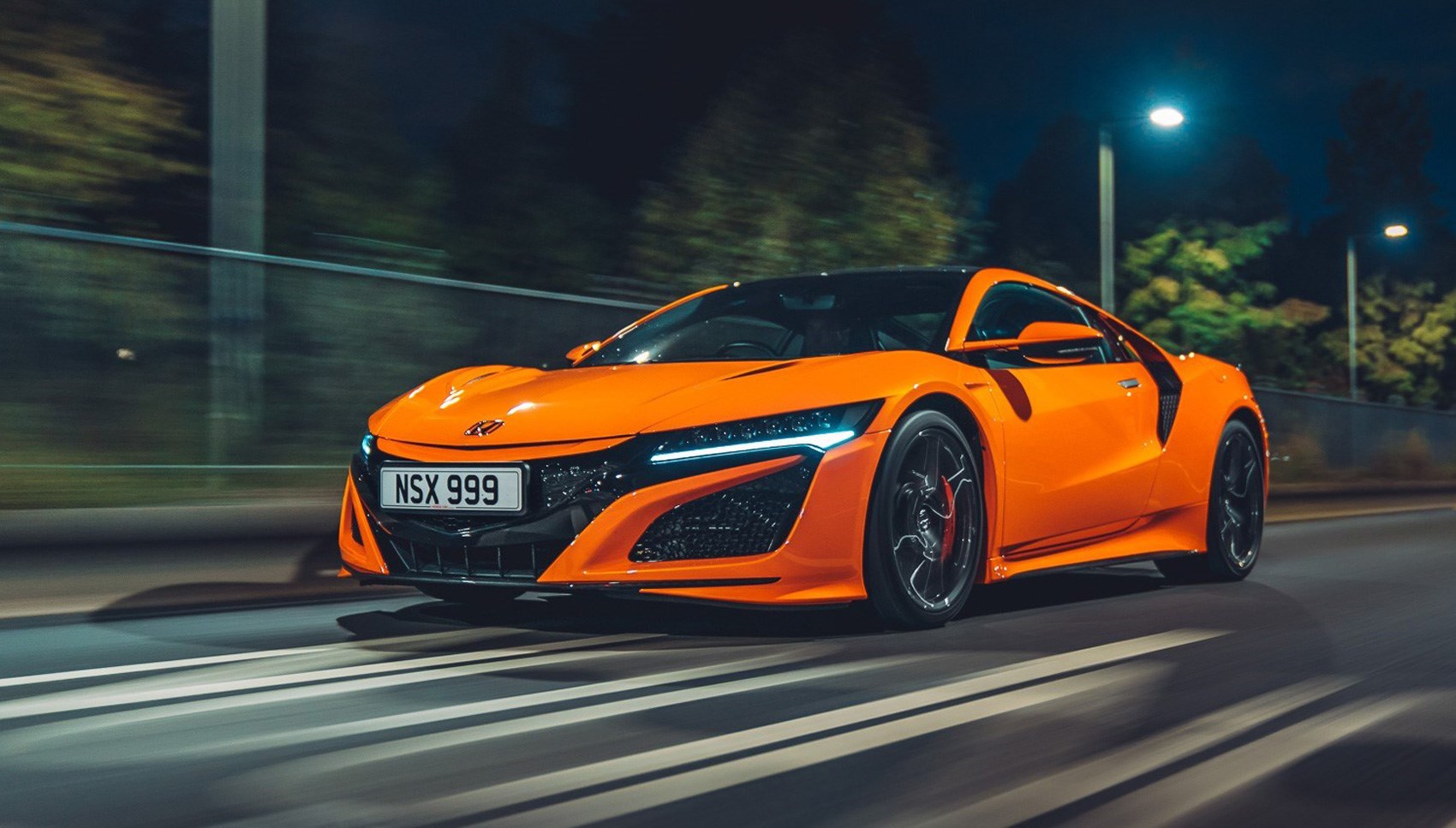
In other words, the NSX is allowing the driver to have that bit more involvement in the act of piloting the car. It’s not simply a case of the NSX taking instructions and then relaying it to the road how it sees fit.
I’m still not convinced by the Continental tyres, mind. As with the pre-facelift version, they seldom feel like they’re getting the best out of the car, with a constant feeling that there’s more grip to be had from what is such a capable chassis.
Honda NSX: verdict
Those looking for the original Honda NSX part two aren’t likely to be impressed by the latest offering. It’s wildly different in many ways and that will, ultimately, mean that many of the NSX’s original fanbase will be quick to dismiss it. However, the desire to innovate and carve its own path in a world that’s never been so packed with 600bhp+ exotica is what links both the Mk1 and Mk2 NSXs.
Thanks to the tweaks seen in the 2019 facelift, the NSX has a layer of engagement to go with the ferocious speed, mind-boggling tech and everyday usability. And while the McLaren 570S or Audi R8 may perform better at either end of their respective excitement and practicality scales, the NSX occupies a curious yet appealing middle ground that no other car can truly rival.
As impressive as it is, though, you can no longer buy a new NSX in the UK as less than impressive sales caused it to be quietly dropped in 2020. That means no NSX Type S, the 592bhp swansong’s 350 units saved for the USA only. Shame.
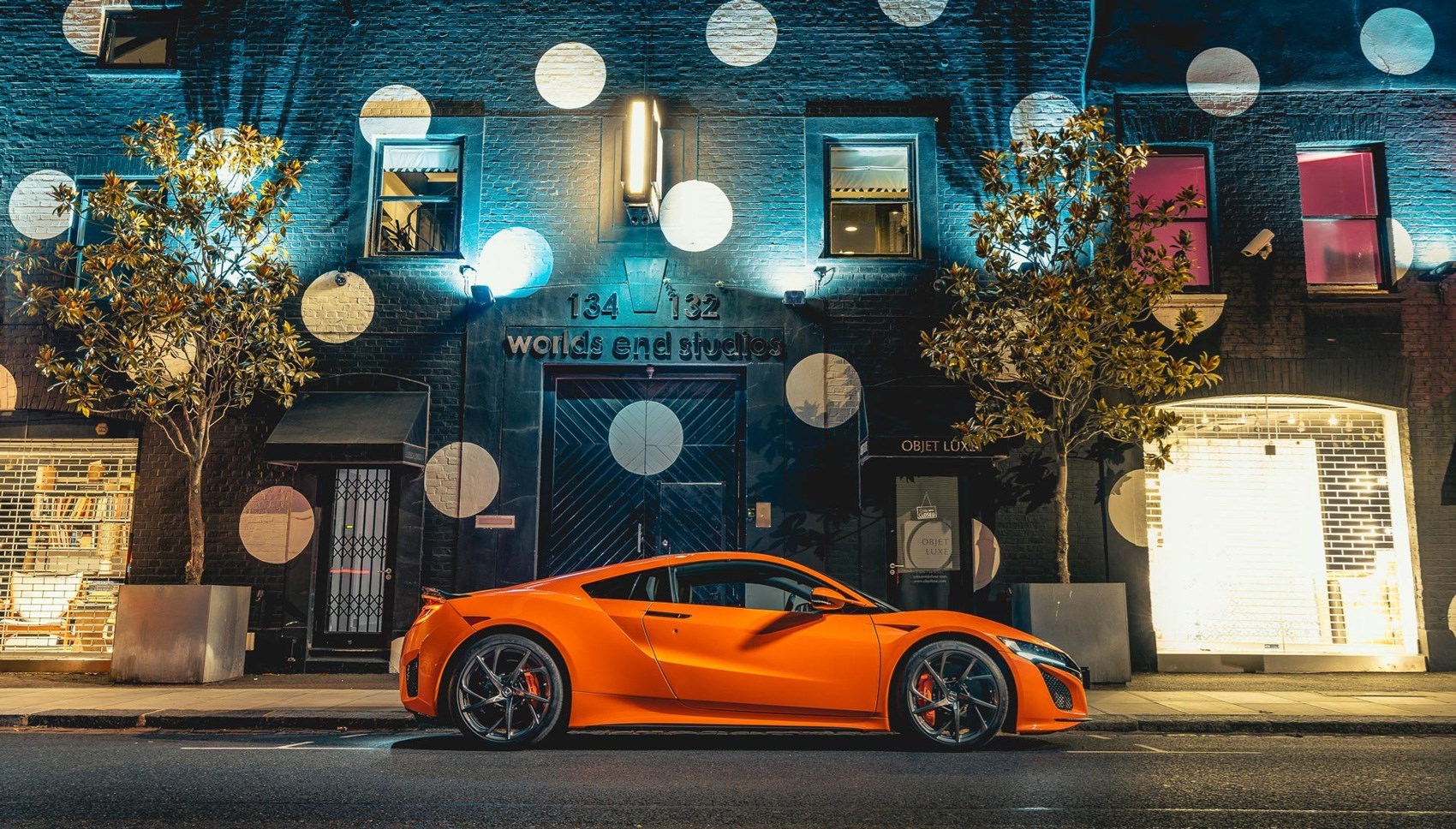
Check out our Honda reviews